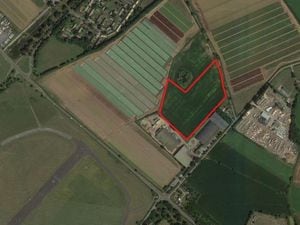Bio-fuel power plant could be set for land near Market Drayton
A 45ft high bio-fuel facility could be developed on farmland near Market Drayton after initial proposals were submitted to Shropshire Council.

Developer Storengy Ltd says around 60,000 tonnes of crops and slurry would be transported to the proposed anaerobic digestion (AD) site just off the A41 in Tern Hill, in order to produce around 750kw of electricity and 60 GWh of renewable biomethane gas per year.
Council planners ruled an Environmental Impact Assessment (EIA) would be required for the 4.5 hectare scheme, after Storengy requested a so-called “screening opinion” from the authority prior to submitting a planning application.
A planning statement prepared by specialist planning agent Sol Environment on behalf of the applicant said the proposal would “reduce and remove” the reliance on imported grid electricity and gas for surrounding properties.
“Storengy UK Ltd wish to develop an area of agricultural land within an existing agricultural farm landholding, in order to develop an Agricultural Anaerobic Digestion (AD) and biomethane production facility. This AD facility will utilise maize silage, whole crop rye and manure feedstocks from the surrounding regional farms and agricultural contractors,” they said.
“The project will export the cleaned biogas into the national gas grid, therefore directly displacing the use of fossil fuels and providing decarbonised gas directly into the distribution network.”
The AD process digests crops, agricultural and other biological matter to produce biogas which is burned to produce electricity and heat, or refined for injection into the national gas network as biomethane.
The proposed facility would comprise a number of feedstock storage ‘clamps’, fermentation tanks and slurry tanks as well as several associated small buildings. The gas dome on top of the digester tanks would be approximately 14m (45ft) in height.
By-products from the site could be reused locally as agricultural fertiliser, displacing the use of chemical fertilisers, developers say.
Potential concerns include fumes from the burning of biogas on the site, dust from processing of feedstock as well as odour and noise emmissions from the plant.
“It is considered that the scale, nature and location of the proposed development is likely to raise significant land-use planning issues. Nevertheless in relation to EIA screening it is considered that the scheme could be designed and laid out to ensure that it would not be likely to have significant effects on the environment,” said a decision document from Shropshire Council’s planning department.
“Shropshire Council hereby adopts the screening opinion that the proposed development is EIA development and that Environmental Impact Assessment is required.”





